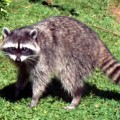On the large island of Newfoundland, many animals are absent from the roll call. No toads or snakes are here, and no shrews or marmots. Nor is there any risk of being sprayed by a skunk, pestered by raccoons or attacked by a porcupine. As for the moose encountered here, they are undoubtedly the descendants of a few specimens introduced onto the island in 1904.
Covered by ice for thousands of years, the island of Newfoundland once again became habitable some 12,000 years ago. Since it was cut off from the mainland, the only way for animals to reach it was by crossing the Cabot Strait or the Strait of Belle Isle. According to scientists, this obstacle explains the absence of many species. Those that are present on the island would seem to have made the crossing on ice or floating debris. Even today, an arctic fox or a polar bear may happen ashore, having hitched a ride on an ice floe.

